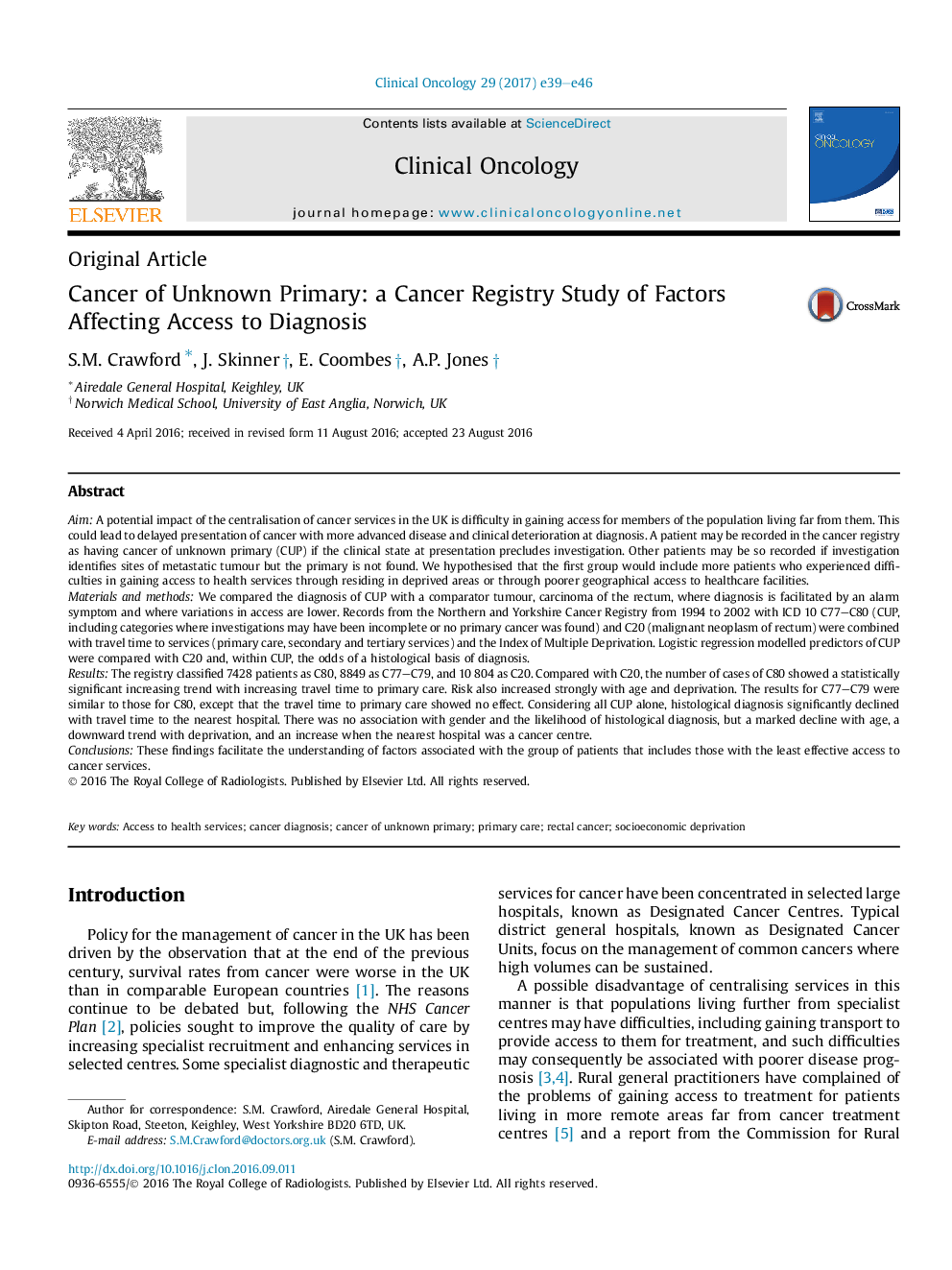| Article ID | Journal | Published Year | Pages | File Type |
|---|---|---|---|---|
| 5698342 | Clinical Oncology | 2017 | 8 Pages |
â¢CUP includes patients in whom the diagnostic process is not complete.â¢Compared with the distribution of rectal cancer it is more likely in deprived areas.â¢Compared with rectal cancer, its likelihood increases with travel time to services.â¢A histological diagnosis is less likely if the hospital is not a cancer centre.
AimA potential impact of the centralisation of cancer services in the UK is difficulty in gaining access for members of the population living far from them. This could lead to delayed presentation of cancer with more advanced disease and clinical deterioration at diagnosis. A patient may be recorded in the cancer registry as having cancer of unknown primary (CUP) if the clinical state at presentation precludes investigation. Other patients may be so recorded if investigation identifies sites of metastatic tumour but the primary is not found. We hypothesised that the first group would include more patients who experienced difficulties in gaining access to health services through residing in deprived areas or through poorer geographical access to healthcare facilities.Materials and methodsWe compared the diagnosis of CUP with a comparator tumour, carcinoma of the rectum, where diagnosis is facilitated by an alarm symptom and where variations in access are lower. Records from the Northern and Yorkshire Cancer Registry from 1994 to 2002 with ICD 10 C77-C80 (CUP, including categories where investigations may have been incomplete or no primary cancer was found) and C20 (malignant neoplasm of rectum) were combined with travel time to services (primary care, secondary and tertiary services) and the Index of Multiple Deprivation. Logistic regression modelled predictors of CUP were compared with C20 and, within CUP, the odds of a histological basis of diagnosis.ResultsThe registry classified 7428 patients as C80, 8849 as C77-C79, and 10Â 804 as C20. Compared with C20, the number of cases of C80 showed a statistically significant increasing trend with increasing travel time to primary care. Risk also increased strongly with age and deprivation. The results for C77-C79 were similar to those for C80, except that the travel time to primary care showed no effect. Considering all CUP alone, histological diagnosis significantly declined with travel time to the nearest hospital. There was no association with gender and the likelihood of histological diagnosis, but a marked decline with age, a downward trend with deprivation, and an increase when the nearest hospital was a cancer centre.ConclusionsThese findings facilitate the understanding of factors associated with the group of patients that includes those with the least effective access to cancer services.
